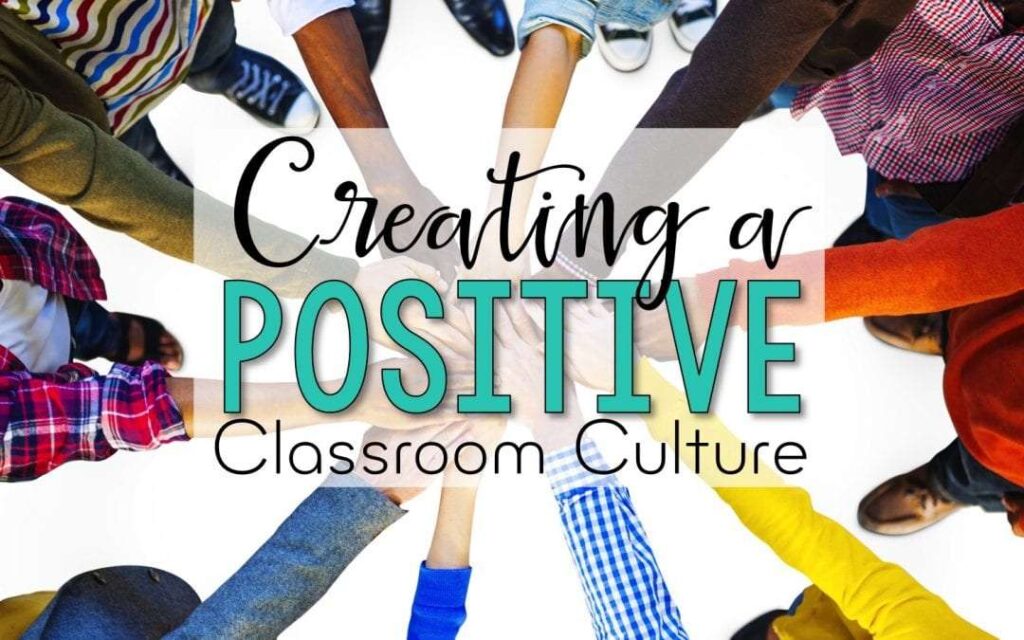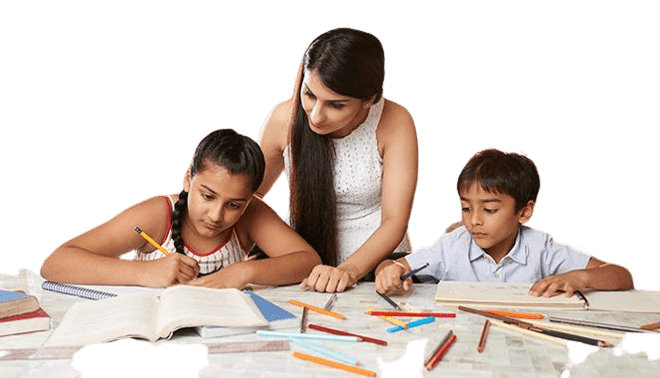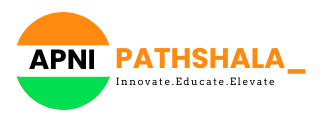Ignite Curiosity: Build a Thriving Learning Pod

Apni pathshala Ignite a Love of Learning: 5 Steps to Building a Thriving Learning Pod Culture Imagine a learning environment where students are actively engaged, brimming with curiosity, and excited to explore new concepts. This is the power of a positive learning pod culture! Unlike traditional classrooms, learning pods offer a personalized approach that fosters collaboration, critical thinking, and a lifelong love of learning. In this blog post, we’ll delve into four key steps to cultivate a positive and enriching learning pod culture: Establish Strong Relationships: The foundation of any successful learning pod is a strong and trusting relationship between facilitator, students, and parents. Set clear expectations at the outset, and act as a supportive coach and mentor, guiding students towards achieving their full potential based on their individual interests. Embrace Positivity and Collaboration: Respect, trust, and open communication are essential for fostering a positive learning environment. Let students take ownership of their learning by encouraging them to participate actively in setting goals and objectives. Celebrate both individual and group achievements, recognizing progress and effort alongside academic success. Foster Continuous Growth and Communication: Maintain open communication with students, parents, and guardians. Encourage regular feedback to identify areas for improvement and adapt the learning experience to better suit the needs of the pod. This collaborative approach ensures everyone feels valued and contributes to the pod’s success. Celebrate the Journey: Learning is a continuous journey, and every step forward deserves recognition. Celebrate milestones big and small, fostering a sense of accomplishment and encouraging students to embrace challenges. Public praise (with permission) can be motivating, but remember the importance of private recognition as well. Bonus : Share Your Vision Transparency is key! Be open about your vision for the learning pod and how it prioritizes student growth and love of learning over rote memorization or standardized testing. Showcase success stories through your website or social media platforms (with permission) to inspire others and demonstrate the positive impact of your learning pod. Conclusion: By implementing these steps, you can create a vibrant learning pod culture that fosters collaboration, ignites a passion for learning, and empowers students to reach their full potential. Remember, the journey is just as important as the destination, so celebrate the joy of discovery and the excitement of learning together! Created by Pranav Gorathe Education, learning April 27, 2024 No Comments
Fix Education’s Gaps: Top Needs EdTech Must Solve

Apni pathshala Unmet educational needs which EdTech entrepreneurs need to address Our education system is a mess, and everyone seems to be paralysed into inactivity because it seems to be a wicked problem. The secret is to focus on one specific problem at a time – an unmet need – and provide the best possible solution for tackling this. STUDENTS High quality reliable updated content which is simple and clear The freedom to chart their own learning journey No compulsion in being forced to study topics they don’t care about Prompt feedback Doubt solving Help when they are stuck Mastery-based learning certifications to document their understanding Markers of progress Content mapped to their personal interests and learning styles Customised teaching so they can learn at their own pace Adult supervision Friends to teach and to learn from Quizzes to test them Flashcards for review prior to exams Previous test papers for exam prep Coaching for life skills Mentoring for career skills Extra-curricular activities Parents Involvement in their children’s learning Proof that they are making progress High exam marks so they can get into a college of their choice Career counselling Affordable fees Trusted competent responsible teachers as experts to guide their children Teachers Respect from students, parents and management Freedom to teach in the way they want Freedom from clerical tasks and administrative trivia Access to new technology to amplify their impact Recognition for their efforts Competitive salaries Conclusion: Our education system has room for improvement. By focusing on unmet educational needs, EdTech entrepreneurs can create innovative solutions that empower students, engage parents, and support teachers. From personalized learning experiences to effective feedback loops, EdTech has the potential to revolutionize education and unlock the potential of every learner. This article highlights some key unmet needs, but it’s not exhaustive. As the education landscape evolves, EdTech will continue to identify and address new challenges. By working together, educators, entrepreneurs, and policymakers can create a future where learning is engaging, effective, and accessible to all. Designed by Pranav Gorathe
The Power of Peer Learning: Enhancing Education Together

In the realm of education, a potent yet often underutilized tool lies within the dynamic interactions among students themselves. This resource is known as peer learning, a collaborative approach where students work together in groups to deepen their understanding of a subject or concept. Peer learning not only fosters academic growth but also cultivates essential social and communication skills, promoting a holistic educational experience. Let’s explore the profound impact of peer learning and how it can revolutionize education for the better. Peer learning operates on the fundamental principle that students learn best from each other. It represents a departure from traditional teacher-centered instruction, where knowledge flows unilaterally from teacher to student. Instead, peer learning champions active engagement and participation from all students involved. Through group discussions, interactive activities, and collaborative projects, students have the opportunity to share perspectives, clarify concepts, and solidify their grasp of the material. One of the primary advantages of peer learning lies in its ability to accommodate diverse learning styles and preferences. In a classroom setting, students come from varied backgrounds, possess unique experiences, and exhibit different ways of processing information. Peer learning fosters an inclusive environment where students can draw upon each other’s strengths and provide support in areas of weakness. For instance, a student proficient in mathematics may offer guidance to a peer struggling with algebra, while the latter may excel in writing and provide assistance with an English assignment. Furthermore, peer learning nurtures critical thinking and problem-solving skills. By engaging in collaborative activities and discussions, students are challenged to think analytically, evaluate information critically, and devise innovative solutions to complex problems. Through peer feedback and constructive critique, students learn to assess their own work objectively and identify areas for improvement. This encourages a culture of continuous learning and self-improvement among peers. Another significant benefit of peer learning is its positive impact on social and emotional development. Collaborative work in groups enables students to develop essential interpersonal skills such as communication, empathy, and conflict resolution. They learn to listen actively, respect diverse viewpoints, and collaborate harmoniously towards common objectives. This not only enhances academic performance but also equips students with valuable skills for success in the workplace and broader society. What is peer learning, and how does it differ from traditional teaching methods? Educators can integrate peer learning into their classrooms by designing collaborative activities, group projects, and discussions that encourage student interaction and participation. Providing guidance and support to facilitate productive peer interactions is essential to ensure that learning objectives are met. Peer learning is supported by a robust body of research that underscores its efficacy in enhancing educational outcomes. Studies have demonstrated the positive impact of peer learning on academic achievement, student engagement, and social development. For instance, research by Johnson and Johnson (2009) highlights the success of cooperative learning strategies rooted in social interdependence theory. Similarly, Topping (2005) identifies trends in peer learning that emphasize its role in promoting active engagement and knowledge construction among students. Peer learning is not just a pedagogical approach; it’s a philosophy that values the contributions of every student in the learning process. By leveraging the diversity of experiences and perspectives within a classroom, peer learning creates a dynamic learning environment where students become active participants in their own education. Furthermore, peer learning cultivates a sense of community and collaboration among students. Through collaborative projects and group activities, students learn to work together towards common goals, fostering a supportive learning community where everyone has a role to play. This sense of belonging and camaraderie enhances student motivation and engagement, leading to improved learning outcomes. Moreover, peer learning promotes a deeper level of understanding and retention of material. When students teach and explain concepts to their peers, they reinforce their own understanding of the material and gain new insights through discussion and feedback. This process of peer teaching not only benefits the student delivering the explanation but also enhances the learning experience for the entire group. Frequently Asked Questions What is peer learning, and how does it differ from traditional teaching methods? Peer learning is a collaborative approach where students work together in groups to deepen their understanding of a subject or concept. Unlike traditional teaching methods, which are often teacher-centered, peer learning encourages active participation and engagement among all students involved. What are the benefits of peer learning for students? Peer learning offers numerous advantages, including enhanced academic understanding, development of critical thinking and problem-solving skills, improved communication, and preparation for real-world collaboration. In conclusion, peer learning holds immense potential to transform education by harnessing the collective intelligence and collaborative spirit of students. By fostering an environment where students learn from and support each other, educators can create enriching learning experiences that empower students to thrive academically, socially, and emotionally. As we continue to explore innovative approaches to education, let us recognize the power of peer learning in shaping the future of learning and development. References: Johnson, D. W., & Johnson, R. T. (2009). An educational psychology success story: Social interdependence theory and cooperative learning. Educational Researcher, 38(5), 365-379. Topping, K. J. (2005). Trends in peer learning. Educational Psychology, 25(6), 631-645. Slavin, R. E. (2014). Cooperative learning and academic achievement: Why does groupwork work? Anales de Psicología/Annals of Psychology, 30(3), 785-791. Prince, M. (2004). Does active learning work? A review of the research. Journal of Engineering Education, 93(3), 223-231. Hattie, J., & Timperley, H. (2007). The power of feedback. Review of Educational Research, 77(1), 81-112. Created by -Pranav Gorathe
